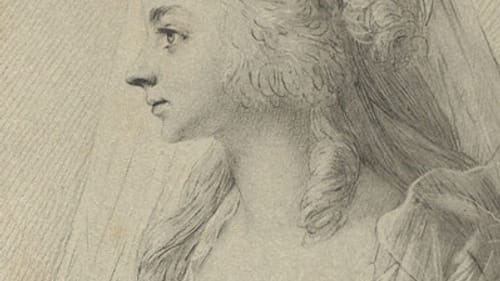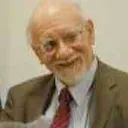Stay in the Loop
BSR publishes on a weekly schedule, with an email newsletter every Wednesday and Thursday morning. There’s no paywall, and subscribing is always free.
Location, location, location
Choral Arts' Bach @ 7 and Tempesta di Mare's Sara and Her Sisters

The Bach @ 7 series and Tempesta di Mare both presented January concerts in venues that enhanced the music. Bach @ 7 deviated from its emphasis on vocal music and presented a chamber-music concert in a room that’s an ideal setting for a Baroque period-instrument concert. Tempesta di Mare visited the National Museum of American Jewish History and played music collected by the three Jewish sisters who kept Bach’s music alive during the decades after his death.
The weaker voices of 18th-century instruments can sound underpowered in large modern halls, but they sound natural in the second-floor reception room in St. Clement’s Church. The reception room is about the size of a Center City coffee shop, and the music on the Bach @ 7 program was originally played in aristocratic salons that were about the same size. The subdued lighting and dark paintings on the walls added to the 18th-century atmosphere.
Le style Parisien
This was a Bach @ 7 program, but it was devoted to French music by Parisian composers, making it an interesting historical companion to the Philadelphia Orchestra's current Paris Festival. As harpsichordist Leon Schelhase pointed out, this music combines a heavy use of ornamentation with “light and airy dance rhythms.” It’s exceptionally beguiling music, but has some depth, too.
The harpsichord sounded especially good in this venue. It never sounded distant. Baroque music plays different voices against each other and the harpsichord sorts out the voices better than its younger relative, the piano; you could hear the different voices clearly.
Schelhase’s partners in the enterprise were familiar figures to local Baroque audiences: Rebecca Harris, on the short-necked Baroque violin, and Sara Cunningham, on the viola da gamba (the older cousin of the cello). The musicians planned the program themselves; they all had their moments in the spotlight.
The opening item included solos for all three instruments as it followed the course of a flirtation through a series of dance movements. Then each musician played a solo piece, with Cunningham playing a suite by the great French exponent of the viola da gamba, Marin Marais. It was all performed, from beginning to end, with the style and understanding of people who love what they’re doing.
Three Baroque girls
The theater in the American Museum of Jewish History is a comfortable size for Baroque music, and the music on the Tempesta di Mare program came with an appropriate story. Bach may have created some of the greatest expressions of Christian faith, but he owes some of his present eminence to three Jewish women: the Itzig sisters. Their musical salons kept his work alive during the long period when the music of the Baroque masters was out of fashion and Bach seemed to be drifting into obscurity. Felix Mendelssohn was the grandson of one of the sisters and their influence led directly to Mendelssohn’s 1828 revival of the St. Matthew Passion and the beginning of Bach’s posthumous rise.

Sara Itzig Levy’s music collection went through its own small epic: It was captured by the Red Army in WWII and carefully preserved in Kiev. Musicologists rediscovered it in 1991 and it was returned to Germany.
Tempesta di Mare’s concerts combine musicianship with impressive scholarship, and this program was a prime example. Tempesta’s co-director, Richard Stone, has visited the Sara Levy collection over the years and copied scores by hand. The opening number was a Bach organ piece for three voices that can be arranged for a number of instrumental combinations; Stone arranged it as an elegant dialogue between two violins, accompanied by his lute.
The program included pieces from the collections of all three sisters and covered a range of Baroque composers. Sara Itzig married a banker, Samuel Levy, who played the flute; she seems to have been fond of the viola. The program included some good moments for co-director Gwyn Robert’s flute, as usual, but it also placed the dark voice of the Baroque viola in an unusually prominent role. Violinist Karina Schmitz switched to the viola for most of those pieces and Daniela Pierson joined her in a piece that called for two violas.
The finale was an interesting jump to a different musical and emotional world. Fanny Itzig became Fanny Itzig von Arnstein and moved to Vienna, where Mozart rented rooms in her house in 1781 and 1782. Fanny’s musicales exposed Mozart to Bach, Handel, and counterpoint, but Fanny was interested in new music, too. Her collection included an instrumental transcription of tunes from Mozart’s opera The Abduction from the Seraglio, and the concert ended with a happy visit to the high-spirited theatrical music developing in Vienna, complete with a hymn to Bacchus.
What, When, Where
Bach Festival of Philadelphia, Bach @ 7. Rebecca Harris, violin. Sarah Cunningham, viola da gamba. Leon Schelhase, harpsichord. Couperin, “Ritratto del amore" Les gouts reunis; Leclair, Sonata for violin Op.5 no.6 "Le Tombeau"; Couperin, Selections from the 1re Ordre, Marais Suite in G major from Book III; Rameau, Concert from "Pieces de Clavecin en concert." January 18, 2017, at St. Clement’s Episcopal Church, 21st and Appletree Streets, Philadelphia. (267) 240-2586 or choralarts.com.
Tempesta di Mare, Sara and Her Sisters. Gwyn Roberts, flute. Emlyn Ngai, violin. Karina Schmitz, violin and viola. Daniela Giulia Pierson, viola. Lisa Terry, cello. Richard Stone, lute. Adam Pearl, harpsichord. Bach, Trio Sonata No. 2 in D minor; Wilhelm Friedeman Bach, Trio Sonata in B-Flat; Carl Philipp Emanuel Bach, Rondo in D minor; Mozart (arr. Went), selections from Die Entführung aus dem Serail; Quantz, Quartet in E minor; Janitsch, Quartet in G minor, “O Haupt." January 21, 2017, at the National Museum of American Jewish History, 101 S. Independence Mall East, Philadelphia. (215) 755-8776 or tempestadimare.org.
Sign up for our newsletter
All of the week's new articles, all in one place. Sign up for the free weekly BSR newsletters, and don't miss a conversation.

 Tom Purdom
Tom Purdom